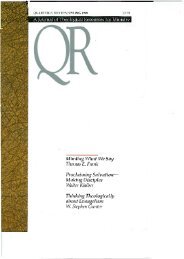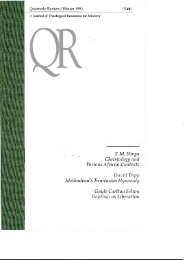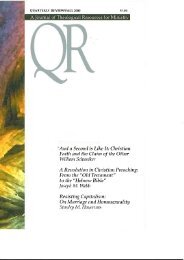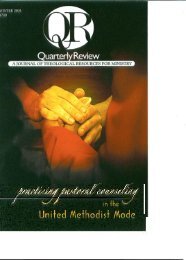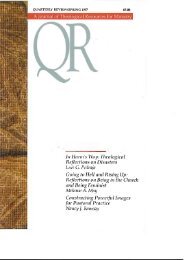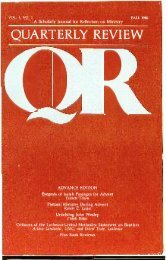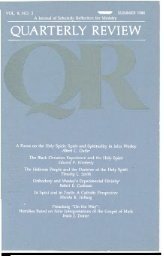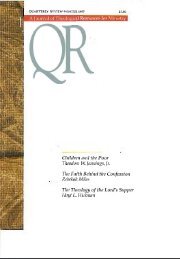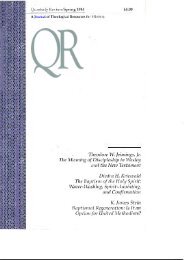Winter 1984 - 1985 - Quarterly Review
Winter 1984 - 1985 - Quarterly Review
Winter 1984 - 1985 - Quarterly Review
You also want an ePaper? Increase the reach of your titles
YUMPU automatically turns print PDFs into web optimized ePapers that Google loves.
NEW<br />
TESTAMENT RECONSIDERED<br />
the "cancer" of Judaism. 3<br />
Such piety "separates us from God."<br />
Consequently, legalistic exegesis of the Old Testament is "blind."<br />
Only the church can read the Scriptures. Legalistic Jews were "deaf to<br />
the gospel,"<br />
Jeremias is or is thought to be by some a counterweight to Rudolf<br />
Bultmann in New Testament scholarship. Both share a common<br />
failing, however: neither knew Second Temple Judaism from its own<br />
sources and each was quite capable of caricaturing it. Bultmann's<br />
anti-Jewish remarks are scattered throughout his writings. Critics of<br />
Bultmann, however, sometimes go overboard and charge him with<br />
anti-Semitism, which is racist Jew-hatred and something different<br />
from harboring negative images of first-century Judaism. In an<br />
address called "The Task of Theology in the Present Situation,"<br />
delivered on May 2, 1933, Bultmann declared:<br />
it is clear that we have to decide whether Christian faith is to be valid<br />
for us or not. It, for its part, can relinquish nothing of its nature and<br />
claim; for 'verbum Domini manet in aeternum.' And we should as<br />
scrupulously guard ourselves against falsifications of the faith by<br />
national religiosity as against a falsification of national piety by<br />
Christian trimmings. The issue is either/or! 4<br />
Whatever his failings, Bultmann never lost sight of the promise and<br />
command of the gospel.<br />
The third major theme in the anti-Jewish interpretive model is the<br />
Pharisees, who continue to be represented as the enemies of Jesus'<br />
teaching. This theme can carry over even into liberation theologies.<br />
When Jon Sobrino discusses Jesus' approach to prayer, he does so<br />
under the rubric of "Jesus' Criticism of Contemporary Prayer." 5<br />
He<br />
starts with the Lukan version of the parable of the Pharisee and the<br />
publican, in which, he says, "Jesus condemns the prayer of the<br />
Pharisees [note the plural] because it is the self-assertion of an<br />
egotistical T and hence vitiated at its very core." Sobrino transforms a<br />
parable into a general indictment. The Pharisee's "pole of reference"<br />
is not to God but to himself. Also, the Pharisee is "even less oriented<br />
toward other human beings. He holds them in contempt. . . and he<br />
thanks Gxl that he is not like them" (Christology at the Crossroads,<br />
p. 147). Pharisaic prayer is a mechanical ceremony in self-deception.<br />
The issue of Jesus' understanding of prayer is used merely as an<br />
example; on every point Jesus contradicts the teaching of the<br />
Pharisees. The way Sobrino, following Jeremias, knows this is by<br />
39



